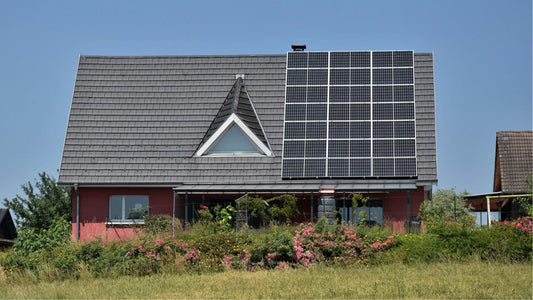Solar energy systems require proper voltage regulation to charge batteries safely and efficiently. One of the most effective ways to achieve this is by using an MPPT (Maximum Power Point Tracking) charge controller. MPPT controllers enable the use of solar panels with different voltage ranges to charge batteries while maximizing energy efficiency. This guide explores how MPPT controllers work and how they can be used with various solar panel voltage configurations to charge batteries of different voltages.
What is an MPPT Charge Controller?
An MPPT charge controller is a device that adjusts the voltage and current coming from a solar panel to ensure the maximum amount of power is delivered to the battery. Unlike PWM (Pulse Width Modulation) controllers, which simply regulate voltage, MPPT controllers dynamically track the optimal voltage-to-current ratio, significantly increasing charging efficiency.
Why Use an MPPT Controller?
-
Efficient Power Conversion: Converts excess solar panel voltage into additional charging current.
-
Allows Higher Voltage Panels: Enables the use of higher voltage solar panels to charge lower voltage batteries.
-
Optimized Performance: Adapts to changing sunlight conditions to maximize power delivery.
-
Supports Various Battery Types: Works with 12V, 24V, 48V, and other battery banks.
Using MPPT Charge Controllers with Different Solar Panel Voltages
MPPT controllers allow flexibility in choosing solar panel voltages, as they can step down higher voltages efficiently. Here’s how different panel voltages can be used to charge batteries.
1. Charging a 12V Battery with MPPT Controller
| Solar Panel Voltage | Can it Charge a 12V Battery? | Efficiency with MPPT |
|---|---|---|
| 12V (Nominal 18V) | Yes | High |
| 24V (Nominal 36V) | Yes | Very High |
| 30V-36V | Yes | Excellent |
| 48V (Nominal 60V-72V) | Yes | Maximum Efficiency |
-
Best Panel Choice: A 24V or 36V panel is highly efficient for charging a 12V battery with an MPPT controller.
-
Why? The MPPT controller converts the higher voltage into additional charging current, making the process more efficient than using a 12V panel.
2. Charging a 24V Battery with MPPT Controller
| Solar Panel Voltage | Can it Charge a 24V Battery? | Efficiency with MPPT |
| 24V (Nominal 36V) | Yes | High |
| 30V-48V | Yes | Excellent |
| 60V-72V | Yes | Maximum Efficiency |
-
Best Panel Choice: A 48V panel (nominal 60V-72V) is ideal for charging a 24V battery with an MPPT controller.
-
Why? Higher panel voltage allows better energy conversion and efficiency in varying sunlight conditions.
3. Charging a 48V Battery with MPPT Controller
| Solar Panel Voltage | Can it Charge a 48V Battery? | Efficiency with MPPT |
| 48V (Nominal 60V-72V) | Yes | High |
| 72V-96V | Yes | Maximum Efficiency |
| 120V+ | Yes | Requires High-Capacity MPPT Controller |
-
Best Panel Choice: A 72V or 96V panel setup is excellent for charging a 48V battery.
-
Why? A higher panel voltage ensures efficient power conversion and reduces losses in longer cable runs.
How MPPT Controllers Improve Efficiency
An MPPT charge controller operates by dynamically adjusting the input from the solar panel to optimize power transfer. This is particularly beneficial when using a higher voltage panel to charge a lower voltage battery.
Example Calculation:
-
A 24V solar panel (nominal 36V) produces 300W (36V × 8.3A).
-
A PWM controller would simply drop the voltage to 24V, resulting in a loss of power (around 200W usable).
-
An MPPT controller would convert the excess voltage into current, maintaining close to 300W output to the battery, significantly improving efficiency.
Choosing the Right MPPT Controller for Your Setup
When selecting an MPPT charge controller, consider the following:
-
Input Voltage Compatibility – Ensure the controller supports your solar panel voltage range.
-
Battery Voltage Support – Check if it works with your 12V, 24V, or 48V battery.
-
Current Capacity – Choose a controller that can handle your system’s power requirements (e.g., 20A, 40A, 60A models).
-
Temperature and Environmental Protection – Consider outdoor-rated controllers if needed.
Conclusion
Using an MPPT charge controller allows flexibility in selecting solar panel voltages for different battery systems while maximizing efficiency. Whether you are using a 12V, 24V, or 48V battery, an MPPT controller ensures you harness the maximum power from your solar panels, reducing energy losses and improving system performance. If you’re planning an off-grid or grid-tied solar setup, investing in an MPPT charge controller is a smart choice for long-term efficiency and reliability.




